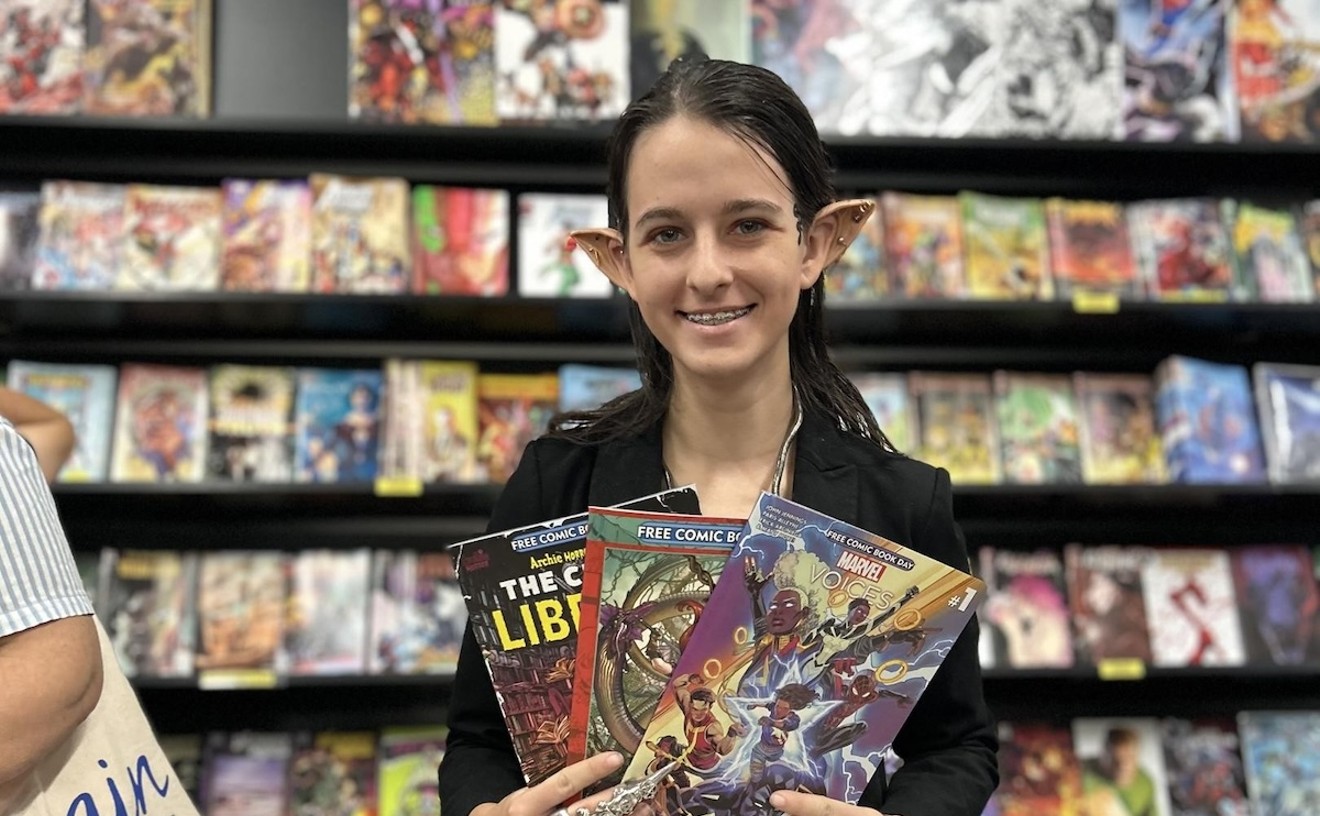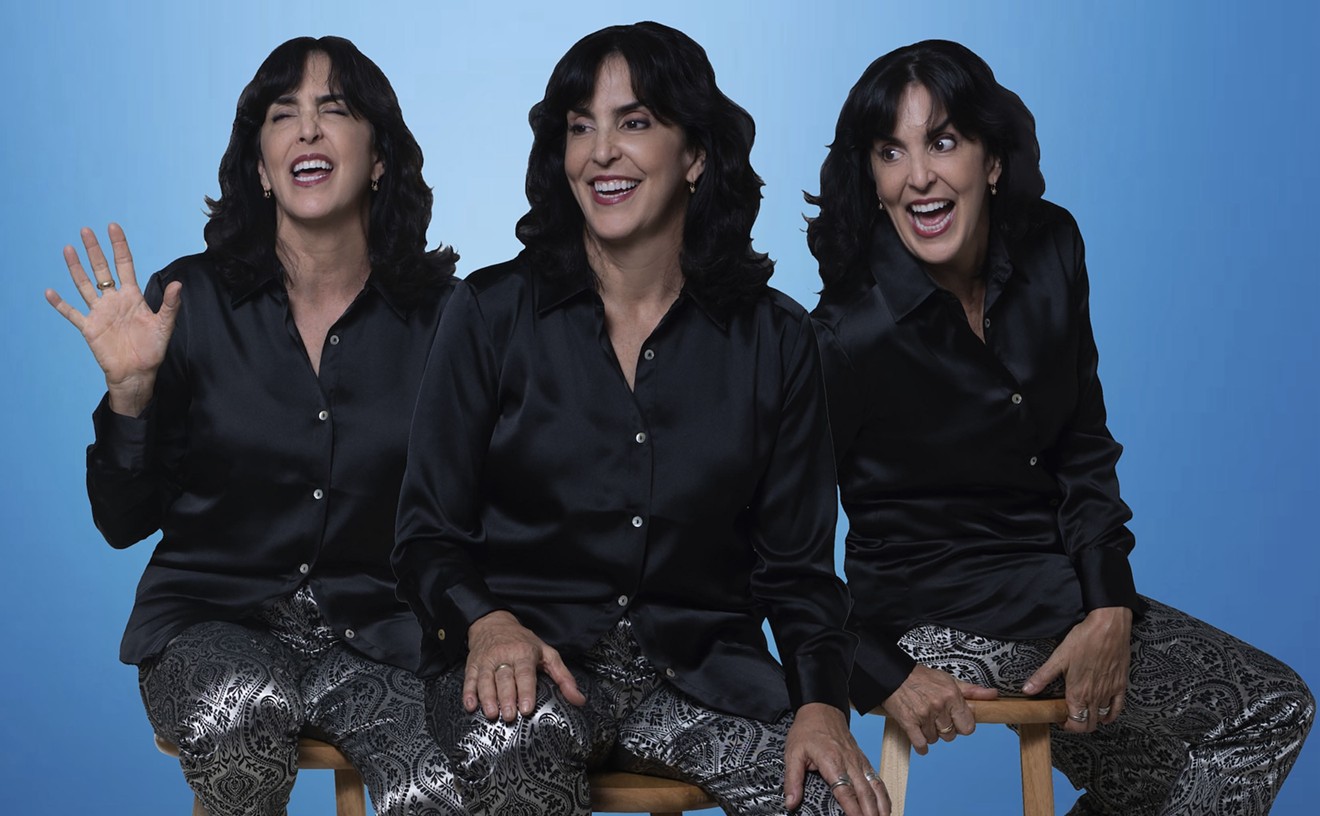The teacup is not included in the current exhibition of Oppenheim's work at the Bass Museum in Miami Beach. (It is too fragile to travel, though the MOMA did allow it be displayed last year at the Guggenheim Museum, where this show originated.) It would be nice to get a look at the famed cup, but its absence is of minor importance to the exhibition. As the title suggests, Meret Oppenheim: Beyond the Teacup is a revisionist retrospective that features the artist's more obscure works, a considerable but uneven output created from the 1930s to 1985, the year of her death.
Oppenheim was 22 years old when the teacup was conceived one afternoon in a cafe in the company of Picasso and his lover Dora Maar. The young Swiss artist had moved to Paris at eighteen to escape her bourgeois upbringing. There she became friendly with Alberto Giacometti, Marcel Duchamp, Max Ernst (who was her lover), and others, and posed nude for some of Man Ray's most famous photographs (notably Veiled Erotic, in which she stands naked behind a printing press, her arm covered in ink).
Like other young women who hung out with the men of the surrealist movement -- and whose own art has been historically overshadowed by that of the men -- Oppenheim was a thoroughly modern muse: beautiful, independent, uninhibited. Throughout her life her image was also frequently present in her own work, where it served as an affirmation of her identity rather than an inspiration for others. Some of these self-portraits are grouped together in the Bass show, which is attractively spread out among three of the museum's galleries.
Two photographic portraits strip Oppenheim of the archetypically feminine allure so seductive to her male colleagues. In the black-and-white X-ray of M.O.'s Skull (1964), only the artist's rings and earrings etched in bright light on the X-ray identify her as a woman. A work from 1980, Portrait (Photo) with Tattoo, shows Oppenheim with close-cut hair and her face painted with an abstract design. The photo is cropped just above her breasts, making her gender questionable. Another androgynous self-portrait is Five Imprints of My Hand, two monotypes of her ink-stained palms, which recall Man Ray's photos of her at the printing press.
Although such stalwart declarations of self were typical of Oppenheim later in her life, as a young woman she was unsure of her place in a world that still bore the traces of nineteenth-century mores; this is expressed in a group of lyrical paintings and drawings from the early Thirties. Sitting Figure with Folded Hands, painted in oil on cardboard, is faceless and sexless, though obviously feminine from its submissive pose: seated with hands gently folded. The figure is silent, like Oppenheim, who rarely spoke at gatherings in Paris. Another small, immensely engaging work, Well, We'll Live Later Then, drawn in India ink and colored with gouache, alludes to Oppenheim's feelings of doubt about her work in specific and herself in general by depicting a spectral feminine figure with arms outstretched, complacently allowing herself to be carried away by a similar being, this one dark and stern.
In the mid-Thirties, after the success of the fur teacup, Oppenheim began to experience episodes of deep depression. "I feel as if millennia of discrimination against women were resting on my shoulders," she wrote in 1937, as quoted in the exhibition catalogue, "as if embodied in my fear of inferiority." In 1939 she returned to Switzerland, married, and made art only sporadically until 1959, when she finally emerged from her malaise.
Oppenheim ultimately deemed that art should be androgynous, but that did not preclude her representations of the female image. Rather, it encouraged them. Her works from the Sixties to the Eighties frequently addressed women and their lot. A small abstract wood sculpture is titled Peasant Woman Carrying a Basket on Her Head (1960); Genevieve (1971) is a rough wooden board that stands upright with two poles extending from it like arms, crossed together in an impotent pose. Among celebratory images of women, The Beautiful African Woman, a vivid painting that evokes the batik fabric of an African dress, stands out.
The work included in this show demonstrates Oppenheim's enthusiasm for artistic experimentation in paintings, drawings, and mixed media assemblages -- some experiments more successful than others. Her paintings became more decorative in her later years, but she continued to have a wily sensibility for sculptures made of found objects: a pair of boots attached at the toes (The Couple), an Animal-Headed Demon made from an ornate clock case with a silver-leaf wooden beak. Also on display are a pair of goatskin gloves, silk-screened in red with the pattern of veins from a hand. Created shortly before Oppenheim died, the gloves embody the same juxtaposition of the natural and the manmade, of function and folly, that made the fur teacup so exciting 60 years ago.
In the lobby of the Bass, an architectural model of Arata Isozaki's proposal for the expansion and renovation of the museum is installed under Plexiglas, on a pedestal. A sleek and modern harbinger of a more prestigious future for the Miami Beach museum when it was first unveiled in 1993, the maquette now stands as a mocking reminder that construction on the building should have been completed by now. It has not even begun.
"This has been a hair-raising experience," says the Bass's executive director Diane Camber, who fears losing state grants of more than $1.7 million slated for the expansion if ground isn't broken by July. The grant money, currently being held in the city's coffers, will have to be forfeited and returned to Tallahassee if the work does not get under way. In a letter to the Florida Arts Council, Florida Assistant Secretary of State Rich Heffley asserted that no further extensions will be allowed, given that construction has already been repeatedly postponed. To date the city has spent more than a million dollars in state funds on studies and plans for the museum site -- $600,000 on architectural design development and construction drawings alone -- that will be wasted if the renovations are not carried out. Camber says that some private donations promised to the museum for the expansion have been rescinded because of the delays.
The Bass project, which got the green light from the city in 1993, has been stalled by an ongoing debate over the construction in Miami Beach of a large regional branch of the Metro-Dade Public Library. At present the Miami Beach branch of the library is a modest structure located just east of the Bass, on Collins and 21st Street. (Before the Bass was created in 1964, the library was housed in the current museum building, designed by Russell Pancoast, son-in-law of Miami Beach pioneer John Collins. The Collins/Pancoast family donated the land to the city in the 1920s and built what is now the Bass building in the 1930s.) The Bass is at the center of the controversy because expansion plans call for the demolition of the library. It obscures the keystone Art Deco structure from Collins and blocks the ocean view from Collins Park, which surrounds the museum.
Major landscaping of Collins Park is an important feature of Isozaki's design (to be executed by the local firm Spillis, Candela, and Partners), which would add one new wing on either side of the existing Bass building. The plan would restore the park to its original incarnation as a grassy promenade leading to Collins Avenue and on to the ocean, planted with tropical foliage and adorned with outdoor sculpture and installations by prominent contemporary artists.
Bordered by Collins and Park avenues between 21st and 22nd streets, Collins Park is one of Miami Beach's seedier areas. Museum staffers report regular sightings of drug transactions among the trees outside the building; they've even come upon prostitutes turning tricks near the Dumpsters out back. "It's Needle Park," Camber sighs.
Though the demolition, which was first suggested in 1988 in a study commissioned by the City of Miami Beach, seemed a foregone conclusion, plans for the museum's renovation and the revival of Collins Park prompted a public outcry. Protests have been voiced at city commission meetings, where various possible locations for a new library -- for which the city has secured $11.5 million from Dade County -- have been discussed. Last year the Miami Beach planning board, the city's land use committee, and City Manager Jose Garcia-Pedrosa supported a site on Collins at 72nd Street. But South Beach citizens opposed to moving the library farther north were so vehement that the city commission asked the city manager to consider sites in or near Collins Park.
Much to Camber's dismay, the idea of incorporating a library into the Bass extension was raised. That possibility has not been discounted, although the commission now favors a spot just north of the museum, between 22nd and 23rd streets, occupied by a parking lot and an abandoned gas station. A feasibility study will be presented at a commission workshop in March. If it is not approved then, the library debate could drag on through another round of studies, commission meetings, and public hearings.
The Bass, meanwhile, is in limbo. "Ours is a long-range plan that the city approved four different times," says Camber. "In 1993 we could have completed the capital campaign. We've been scheduling big exhibitions ["Paul Klee in Bern," Russian folk and avant-garde art] for the expanded space. If we have to cancel them, what do we do? We have commitments with the lending institutions. There's a lot of money involved. It's a tremendously difficult situation to be in."
Still, Camber is optimistic that the expansion will go through as planned. In her office at the museum, she leafs through a pile of letters of support for the plans from local architects, including one from Thorn Grafton, an heir to the Collins/Pancoast family. "If people would only have vision, they would see what this could be," Camber says, then corrects herself. "What it will be."
Meret Oppenheim: Beyond the Teacup. Through April 6 at the Bass Museum of Art, 2121 Park Ave, Miami Beach; 673-7530. Admission is $5.










